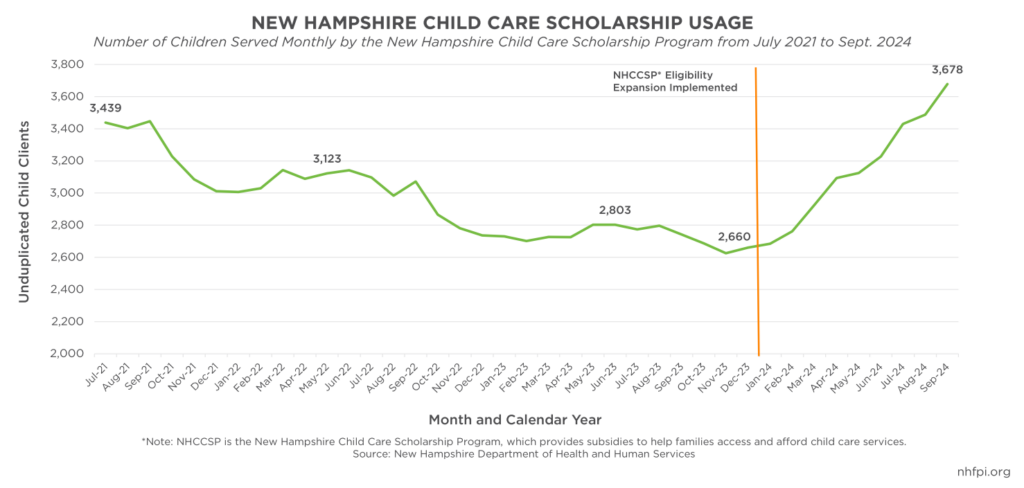As 2025 approaches, the New Hampshire Fiscal Policy Institute rounded up ten fiscal facts to help inform the Granite State’s public policy conversations in the New Year.
1. About 98,000 Granite Staters Lived in Poverty in 2023
The poverty rate, using the Official Poverty Measure, held steady at 7.2 percent in 2023. That figure represented about 98,000 Granite Staters with incomes below poverty-level thresholds, including about 20,000 children under 18 years old and 21,000 adults age 65 years or older.
2. Around 42,300 Granite State Households were Food Insecure During 2021-2023
During the 2021-2023 period, approximately 42,300 New Hampshire households, or 7.4 percent of households, were food insecure. This was an increase from 2019-2021, when the state’s 5.4 percent food insecurity rate was lower due to pandemic-related federal aid to households.
3. After Federal Aid Expired, Poverty Rebounded for Children, Rose for Older Adults in 2022
As measured by the Supplemental Poverty Measure, which adjusts for tax credits and certain other factors, child poverty was reduced by half in New Hampshire during 2021, but rebounded in 2022, according to the most recent data. Poverty among adults age 65 and older also rose sharply.
4. Recent New Hampshire Median-Priced House Buyers in 2024 May Have Had Monthly Mortgage Payments as High as $4,000
During 2024, N.H. buyers paying the median statewide single family house sale price ($515,000 for Jan-Nov 2024), an average 30-year mortgage interest rate, an average property tax rate, and a 5 percent downpayment, would owe a mortgage payment of about $4,000 per month.
5. Child Care Teachers and Caregiving Employees Earn Significantly Less than NH's Median Wage
Key caregiving occupations had lower earnings than N.H. occupations overall. Assuming full-time employment at the median hourly wage, 2023 earnings were $49,980 for all occupations, but $32,490 for child care teachers and $34,420 for home health and personal care aides.
6. Child Care Scholarship Enrollment Increased Substantially After State Expansion, Reaching More Families
The current State Budget expanded access to Child Care Scholarships, boosting the amount of aid for families to access and afford child care. Between December 2023, the month before implementation, and September 2024, enrollment increased 38 percent.
7. New Hampshire's Labor Shortage May Have Eased in 2024
Preliminary data suggest there have been fewer New Hampshire job openings per unemployed worker on average in 2024 than in 2023 or 2022, and the size of the labor force increased. However, there were still about two job openings for each unemployed worker in September 2024.
8. Median Household Income Increased in 2023
After falling behind living costs in 2022, median household income in New Hampshire grew faster than inflation in 2023, reaching about $97,000. This increase brought inflation-adjusted median household income to about the high reached in 2021.
9. Migration to New Hampshire from Massachusetts Slowed in 2023
Immediately following the COVID-19 pandemic, net migration from Massachusetts to New Hampshire increased. However, the latest data suggest the inflow was reduced by more than half in 2023, while New Hampshire continued to be a net exporter of residents to Maine.
10. After Dramatic Growth Fueled by Pandemic-Era Corporate Profits, State Revenues are Declining
Revenue growth following the COVID-19 pandemic, primarily due to rising national corporate profits, has subsided. Combined General and Education Trust Funds revenue was 8.9 percent lower through November than it was at this time last fiscal year.
– Nicole Heller, Jess Williams, and Phil Sletten










